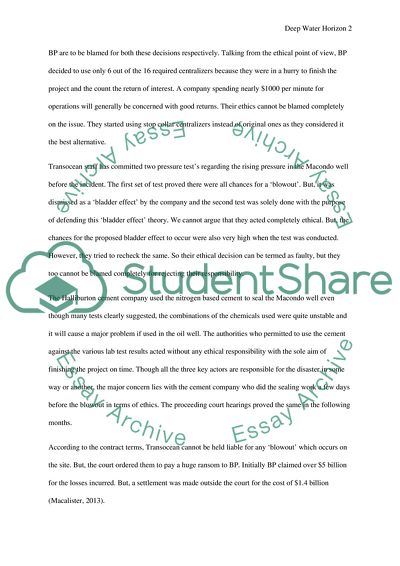Cite this document
(The Deepwater Horizon Disaster Assignment Example | Topics and Well Written Essays - 2500 words, n.d.)
The Deepwater Horizon Disaster Assignment Example | Topics and Well Written Essays - 2500 words. Retrieved from https://studentshare.org/environmental-studies/1792330-the-deepwater-horizon-disaster-challenge-in-ethical-decision-making
The Deepwater Horizon Disaster Assignment Example | Topics and Well Written Essays - 2500 words. Retrieved from https://studentshare.org/environmental-studies/1792330-the-deepwater-horizon-disaster-challenge-in-ethical-decision-making
(The Deepwater Horizon Disaster Assignment Example | Topics and Well Written Essays - 2500 Words)
The Deepwater Horizon Disaster Assignment Example | Topics and Well Written Essays - 2500 Words. https://studentshare.org/environmental-studies/1792330-the-deepwater-horizon-disaster-challenge-in-ethical-decision-making.
The Deepwater Horizon Disaster Assignment Example | Topics and Well Written Essays - 2500 Words. https://studentshare.org/environmental-studies/1792330-the-deepwater-horizon-disaster-challenge-in-ethical-decision-making.
“The Deepwater Horizon Disaster Assignment Example | Topics and Well Written Essays - 2500 Words”, n.d. https://studentshare.org/environmental-studies/1792330-the-deepwater-horizon-disaster-challenge-in-ethical-decision-making.


